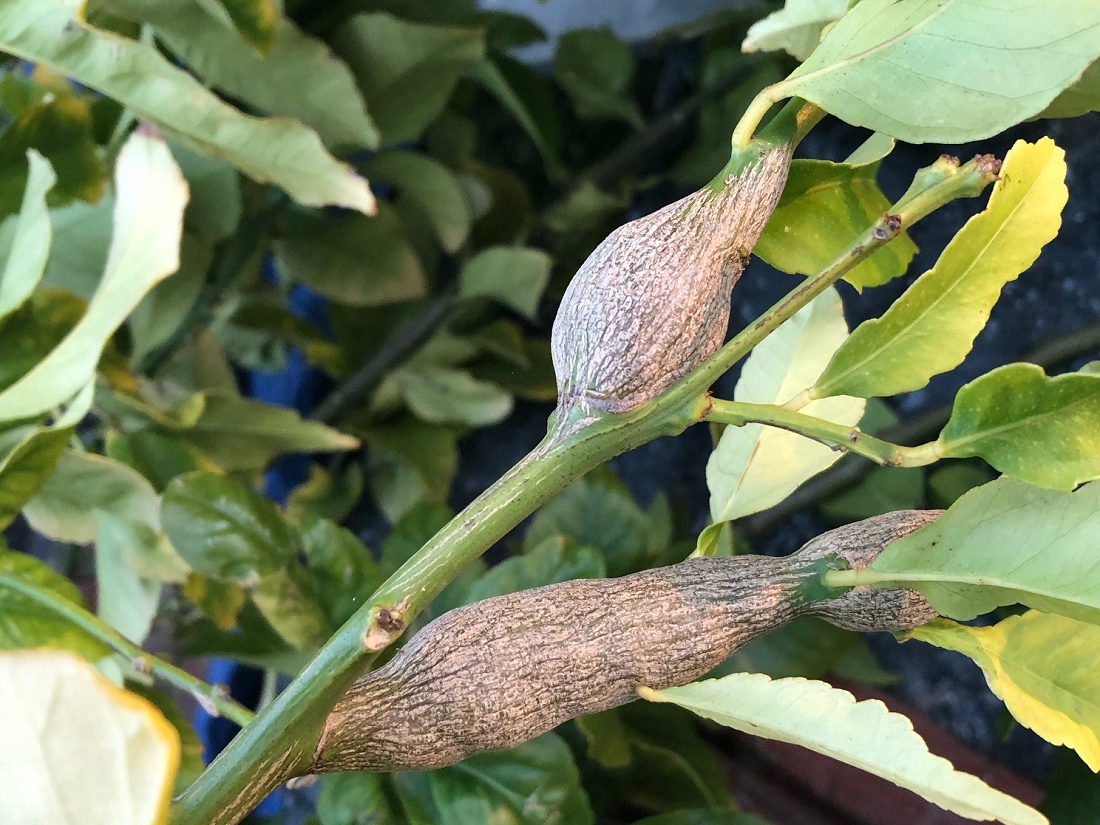Those in citrus production areas are encouraged to be particularly vigilant in checking for and controlling the pest.
Citrus gall wasp damages trees by producing galls that weaken branches, making them less productive over time.
Department of Primary Industries and Regional Development (DPIRD) research scientist Rachelle Johnstone said the pest was established in the Perth metropolitan area and had been found in some regional areas.
“Management of this pest is vital, not only to protect trees in our own gardens but to reduce the risk of spread into our commercial citrus orchards which supply fresh, local fruit for us to eat,” Ms Johnstone said.
WA Citrus biosecurity representative Helen Newman said information pamphlets had been sent to residents and businesses in areas close to citrus orchards, including Wyndham-East Kimberley, Derby-West Kimberley, Carnarvon, Irwin, Moora, Dandaragan, Gingin, Chittering, Waroona, Harvey, Dardanup, Bunbury, Capel, Nannup and Manjimup.
“We are asking people in these areas to check their trees, remove and report any gall wasp found,” Ms Newman said.
“This is an opportunity to keep regional gardens free of this pest. Once established, this pest is very difficult to control.
“Citrus gall wasp has not yet been found in commercial orchards – these efforts will help keep orchards free of the pest for longer, while better management techniques are found.”
Home gardeners should look for distinctive woody bulges, or galls, on the shoots and branches of citrus trees, which can measure up to 250 millimetres long and 25mm thick. Galls can be difficult to find in newly infested trees as they can be quite small.
The wasps lay eggs in new growth from September to December and galls become visible from February.
Galls removed from July onwards need to be treated before disposal to ensure larvae do not survive. This can be done by placing them in a well-sealed plastic bag and leaving them in the sun.
Home gardeners are encouraged to work with neighbours to reduce reinfestation of trees in local areas.
Information on citrus gall wasp control is available at www.agric.wa.gov.au by searching for ‘citrus gall wasp control’.
To report the presence of citrus gall wasp in a regional area, send a photo and your location using the department’s MyPestGuide® Reporter app - select citrus gall wasp survey in the drop-down list - or email biosecurity@wacitrus.com.au. Only report observations outside the Perth metropolitan area.



